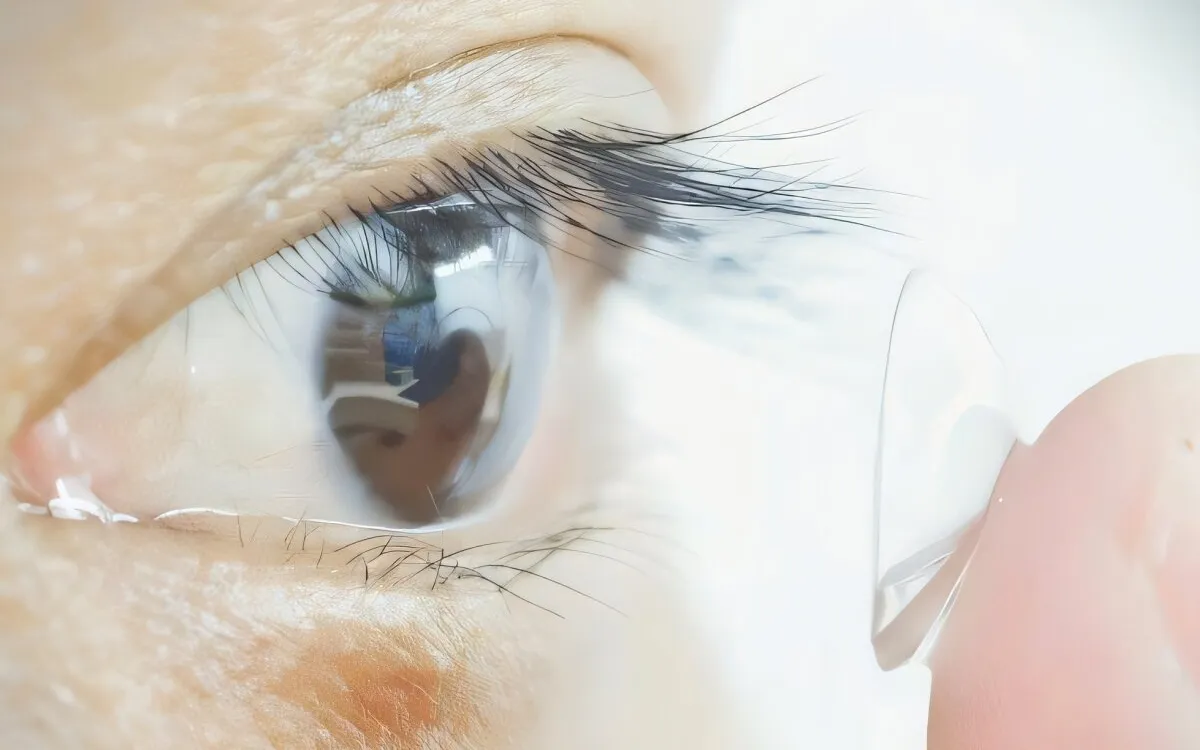
In a groundbreaking study published in the journal Cell, a team of neuroscientists and materials scientists has developed revolutionary contact lenses that grant both humans and mice the ability to perceive infrared light by converting it into visible wavelengths. Unlike traditional infrared night vision goggles, these contact lenses do not require any external power source, making them a more accessible and innovative option for enhancing vision.
The newly designed contact lenses allow wearers to see both infrared and visible light simultaneously, although the perception of infrared light is notably enhanced when the eyes are closed. According to senior author Tian Xue, a neuroscientist at the University of Science and Technology of China, “Our research opens up the potential for noninvasive wearable devices to give people super-vision.” This breakthrough technology has immediate applications in fields such as security, rescue operations, encryption, and anti-counterfeiting measures.
The contact lenses utilize advanced nanoparticles that effectively absorb infrared light and convert it into wavelengths visible to the human eye, particularly in the range of 400–700 nm. Specifically, these nanoparticles are designed to detect near-infrared light, which falls within the 800–1600 nm range, just beyond human visibility. Previously, the research team demonstrated that these nanoparticles could facilitate infrared vision in mice when injected directly into the retina, but aimed to create a less invasive solution.
To create these innovative contact lenses, the research team combined the nanoparticles with flexible and nontoxic polymers typically used in standard soft contact lenses. After confirming the lenses' safety, they conducted extensive tests on both humans and mice. The results were promising; mice wearing the contact lenses exhibited behaviors indicating they could detect infrared wavelengths. For instance, when given a choice between a dark box and an infrared-illuminated box, the contact-wearing mice preferred the dark box, while those without the lenses showed no preference.
The study also revealed physiological evidence supporting infrared vision in contact-wearing mice. Their pupils constricted in response to infrared light, and brain imaging techniques showed activation in visual processing centers when exposed to infrared stimuli. In human trials, participants were able to detect flashing Morse code-like signals and accurately perceive the direction of incoming infrared light when wearing the contact lenses. “It’s totally clear-cut: without the contact lenses, the subject cannot see anything,” said Xue, “but when they put them on, they can clearly see the flickering of the infrared light.”
To further enhance the functionality of these contact lenses, the researchers incorporated an additional feature that allows users to differentiate between various infrared wavelengths. By engineering the nanoparticles to color-code different infrared spectra, specific wavelengths can be transformed into visible colors: 980 nm infrared is converted to blue light, 808 nm to green light, and 1,532 nm to red light. This innovation not only increases the detail perceived within the infrared spectrum but also holds potential for assisting color-blind individuals by converting red visible light into shades they can detect.
While the current version of the contact lenses can only detect infrared radiation emitted from an LED light source, the research team is actively working to enhance the sensitivity of the nanoparticles. The goal is to enable the lenses to detect lower levels of infrared light, broadening their applicability. In addition, the team is developing a wearable glass system using the same nanoparticle technology to allow for higher-resolution infrared information.
This innovative technology represents a significant leap forward in the field of vision enhancement, paving the way for exciting new applications in various sectors. As research continues, the possibilities for these contact lenses and their ability to provide super-vision are boundless.